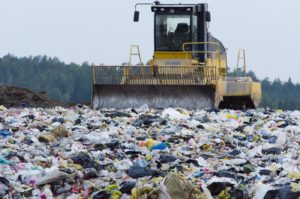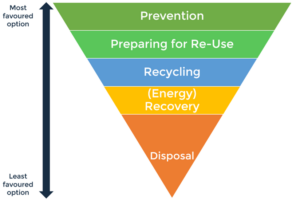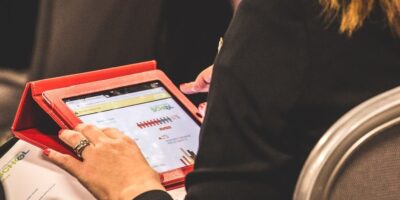Moving to a circular economy: waste is a resource

Moving to a world with zero waste
The legal definition of waste offered by the EU Waste Framework Directive, which provides the main basis for Ireland’s current waste legislation, as ‘any substance or object that the holder discards, or intends to, or is required to discard’. This definition implies that a substance or object is considered to be waste only when it has been decided that there is no further practical use for it. At all other times the substance or object should be considered as an item with potential for continued use.
Using terms such as ‘resources’, ‘spares’ or ‘surplus’ can help the process of rethinking how you view what you might previously have considered to be waste. For example, plasterboard offcuts have no further practical use, so it is realistic to label them as ‘waste’ and recycle them appropriately. However, surplus unused bricks need not be deemed as waste as they could be used elsewhere.
We need to think about the bigger picture as we become more aware globally about the impacts of our throwaway culture. It is estimated that by 2050 there could be more waste plastic in the ocean than fish and that if everybody used resources at the same rate as an average EU resident, we would need at least 3 planets to sustain ourselves.
The true cost of waste in a project is often underestimated.
Most waste is produced on-site through: over-ordering; ordering the wrong thing; damage by mishandling materials; off-cuts; inadequate storage of materials; and unnecessary packaging of construction materials, e.g. plastics and cardboard. All of this before we even consider the cost of the processes and the amount of carbon involved!
In addition, reducing our consumption of raw materials and being more efficient with what we use results in a wide range of environmental and social benefits associated with the consumption of fewer resources and the disposal of waste products. Clearly there is a cost saving too.
The waste hierarchy

We can all play a role in tackling these problems. As a sub-contractor, simple changes on-site to reduce, re-use and recycle your construction waste can bring many benefits. This is what we refer to as the waste hierarchy, a useful guide for the sustainable treatment of waste, prioritising waste treatment in the following way:
- Prevention
- Preparing for Re-use
- Recycling
- Other recovery (such as energy recovery)
- Disposal, usually to landfill
A paradigm shift is needed when we think about the resources we use, away from a linear ‘take – make – dispose’ approach to a cycle which uses products or materials that have reached “end of life” as inputs to produce the next generation of products that we need. There is also the need for thinking laterally and choosing different materials or different product/service models that bring resource efficiency benefits.
A simple construction example of this might be using aggregates made from old crushed concrete or blast furnace slag, instead of virgin aggregates from a quarry or dredged from the sea, in the production of new concrete.
This approach is called the circular economy and you can find out more about this concept in the School’s resources here.
Explaining the Circular Economy
Watch this short video from the Ellen Macarthur Foundation that will make you consider re-thinking and re-designing the way we make stuff.
Waste and Resource Efficiency
Waste hierarchy
Web link
Waste and Resource Efficiency
Hazardous waste
Web link
Waste and Resource Efficiency
Let’s Meet Levels
Web link
Waste and Resource Efficiency
Waste Management – Sustainability Short
Video





 15 minutes
15 minutes